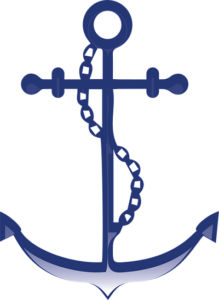- MN ABE Connect
- Archive
- Getting Started, Moving Forward: An Explicit Plan for Teaching the Writing Standards
Getting Started, Moving Forward: An Explicit Plan for Teaching the Writing Standards
Marn Frank, STAR & Literacy CoordinatorDuring 2016-2017, Paula Freiermuth, Osseo Adult Education, presented Getting Started, Moving Forward with the CCR/ELA Writing Standards at the ABE Summer and Language & Literacy Institutes. I attended her training in January and it helped me to understand the CCRS reading-writing connection. Paula graciously granted permission to share key information from her PowerPoint slides, session handouts, and activities in this and future articles.
Writing Anchors
 There are nine Writing Standards or Anchors organized into three groups:
There are nine Writing Standards or Anchors organized into three groups:
- Text Types and Purposes (Anchors 1-3)
- Production and Distribution of Writing (Anchors 4-6)
- Research to Build Knowledge (Anchors 7-9)
[They] “cultivate the development of three mutually reinforcing writing capacities: crafting arguments, writing to inform and explain, and fashioning narratives about real or imagined experiences. The overwhelming focus of writing throughout the levels is on arguments and informative/explanatory texts.” (College and Career Readiness Standards for Adult Education, 2013, page 22)
Cultivating Both Reading & Writing
Paula used the Writing Standard organization and purpose to create an explicit instructional plan that cultivates students’ reading and writing capacities. Here are her eight planning or teaching steps:
- Select an appropriate writing anchor (or ultimate end point) and skill level (or instructional starting point)
- Select an informational or narrative reading within the same grade level range (K-1, 2-3, 4-5, 6-8, 9-12)
- Read the text closely with students and identify key details, main topic or theme, and purpose
- Create a clear writing task using the language of the reading text and writing skill
- Explain the writing task and guide picture/word, sentence, paragraph, or essay drafting
- Provide teacher or guide peer review to develop and strengthen drafts
- Guide and support students in draft revising, editing, or rewriting
- Expect final drafts to be typed, checked, and published using a word-processing program
Reading-Writing Tasks
Here are three examples of Paula’s reading-writing tasks demonstrating how she cross-implements the Writing Standards at Levels A-C:
Anchor 3, Level A: Narrative Task for “Mary Walks Home” – Very Easy True Stories
Write a paragraph about what Mary does every day. Tell Mary’s story in order. Use time-order words. Type your final paragraph. Use your best grammar, spelling, and punctuation.
Anchor 2, Level B: Informative/Explanatory Task for “Unsafe Food Problems in Greenville Last Year” – Step Forward: Language for Everyday Life
What does this article say about how people can get sick from unsafe food? Write a paragraph that explains how people get sick from unsafe food. Have a topic sentence. Include details from the article. Use your best spelling, grammar, and punctuation. Type your final paragraph.
Anchor 1, Level C: Opinion/Argument Task for “A Safe Ride” – ReadWorks at readworks.org
What do you think? Should school buses be required to have seat belts? Write a paragraph that states your opinion and gives supporting details from the article. Make sure your writing has a topic sentence and conclusion. Include reasons from the article to support your opinion. Be organized. Follow the rules for grammar, usage, and mechanics. Type your final paragraph.
In my May (Part 2) and June (Part 3) newsletter articles, I will share more reading-writing tasks from Paula and Achieve the Core at achievethecore.org.
Newsletter Signup
Get MN ABE Connect—the official source for ABE events, activities, and resources!
Sign UpArticle Categories
- ABE Foundations/Staff Onboarding
- ACES/Transitions
- Adult Career Pathways
- Assessment
- CCR Standards
- Citizenship
- COVID-19
- Cultural Competency
- Digital Literacy/Northstar
- Disabilities
- Distance Learning/Education
- ELA
- Equity/Inclusion
- ESL
- HSE/Adult Diploma
- Listening
- Math/Numeracy
- Mental Health
- Minnesota ABE
- One-Room Schoolhouse/Multilevel
- Professional Development
- Program Management
- Reading
- Remote Instruction
- Science
- Social Studies
- Speaking/Conversation
- Support Services
- Teaching Strategies
- Technology
- Uncategorized
- Volunteers/Tutors
- Writing